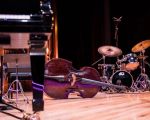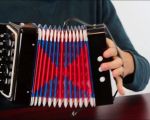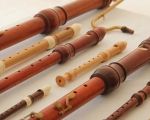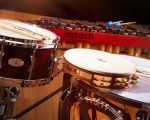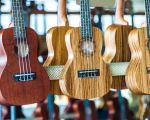Marching Bands: The Heartbeat of School Spirit
As someone who's been part of a marching band for years, I can tell you there's something truly magical about the blend of music, precision, and school spirit. Marching bands play an integral role in school parades, halftime shows, and sporting events across the United States. But, if you're new to the world of marching bands or you're thinking about joining one, you may be wondering what instruments are best suited for this unique and dynamic performance style.
Whether you're a seasoned player or a beginner looking to join your school's marching band, choosing the right instrument is critical for your success. In this article, I'll take you through some of the best marching band instruments that can help make your performance a showstopper.
1. Brass Instruments: Power and Presence
Brass instruments are often the backbone of any marching band. They’re known for their loud, resonant sound, which is perfect for outdoor performances. As a trumpet player, I can confidently say that the trumpet is one of the most iconic instruments in a marching band. Its bright, bold tone can easily cut through the crowd, making it the ideal instrument for leading the band's melody.
Other brass instruments such as the trombone, baritone, and euphonium also play a vital role. The trombone, for example, with its unique slide mechanism, adds an element of flair and drama to any performance. The euphonium, on the other hand, provides a rich, warm tone that adds depth to the brass section.
When choosing a brass instrument, make sure you consider the weight and comfort of the instrument, as you'll be carrying it during long parades and performances. A quality, lightweight instrument can make all the difference in the comfort and ease of your performance.
2. Woodwind Instruments: Melodic and Flexible
Woodwinds might not be as loud as brass, but they have a unique ability to add intricate melodies and harmonies to a marching band's overall sound. Instruments like the flute, clarinet, and saxophone are essential for giving depth and complexity to the band's repertoire.
During my time as a clarinet player, I discovered that the flexibility of the woodwind family allows for a wide range of musical expressions, from soft, delicate passages to loud, commanding statements. The saxophone, with its rich, full tone, adds a unique jazzy flavor to the band's music, which is often featured in halftime shows.
For marching bands, woodwind instruments are typically designed to withstand outdoor elements. Make sure your instrument is durable and built for the rigors of outdoor performances. Investing in a good-quality instrument with weather-resistant features is always a wise choice.
3. Percussion Instruments: The Rhythm Section
The percussion section is the heartbeat of any marching band. From snare drums to bass drums, cymbals, and timpani, percussion instruments provide the essential rhythm that keeps the band moving in sync. If you’ve ever been part of a drumline, you know how exciting and intense it can be to play in this section.
One of the most important percussion instruments in a marching band is the snare drum. It’s known for its sharp, crisp sound, which can cut through the noise of a busy parade or stadium. Bass drums, with their deep, resonant tones, are equally important for laying down the foundational beats that the rest of the band follows.
In addition to the traditional drums, marching percussion ensembles often include cymbals, tambourines, and even marching mallets for instruments like xylophones and marimbas. These instruments add texture and flair to the overall performance, often in visually stunning ways.
4. Specialty Instruments: Unleashing Creativity
Beyond the standard brass, woodwind, and percussion instruments, many marching bands incorporate specialty instruments that help set their performances apart. Instruments like the sousaphone, a marching version of the tuba, add an incredibly rich, low-end sound to the band’s overall sound. The sousaphone wraps around the player's body, making it easier to march while playing.
Additionally, you might come across instruments like the mellophone, which is often used as a substitute for the French horn in a marching band setting. Its bell is forward-facing, making it ideal for outdoor performances. The marching french horn, on the other hand, offers a more traditional, distinct sound and is often featured in orchestral-style performances.
These specialty instruments often require a higher level of expertise and musicianship, but they can truly elevate a marching band's sound and visual presentation.
5. Choosing the Right Instrument for You
So, how do you choose the right instrument for your marching band experience? As I always tell my fellow bandmates, it's important to consider both your personal preferences and the role you want to play in the band. Do you want to be at the front, leading with bold, powerful brass, or would you rather play a melodic line on a woodwind? Or perhaps you're drawn to the rhythm section, where you can drive the performance forward with powerful percussion.
Another factor to consider is comfort. Marching can be physically demanding, especially during long parades or halftime shows. Make sure to choose an instrument that you can comfortably carry and play for extended periods. Some instruments, like the trumpet, are relatively lightweight, while others, like the sousaphone, can be heavy and require extra effort to march with.
Lastly, think about the specific sound you want to contribute to the band's overall performance. Each section of the band has its own unique sound, and finding your fit is key to enjoying the marching band experience.
6. How to Take Care of Your Marching Band Instrument
Taking care of your instrument is just as important as choosing the right one. Marching band instruments undergo a lot of wear and tear, especially when you're performing outdoors. Regular cleaning and maintenance are essential to keep your instrument sounding great.
For brass instruments, this means regularly cleaning the valves, slides, and tuning slides to prevent corrosion. Woodwinds need to be properly dried and stored to prevent warping. Percussion instruments should be kept in top condition by checking drumheads for wear and ensuring mallets are in good shape.
In addition to regular maintenance, it's also a good idea to have your instrument professionally serviced once a year to ensure it's functioning at its best. A well-maintained instrument will help you play your best, and it will also last much longer!


